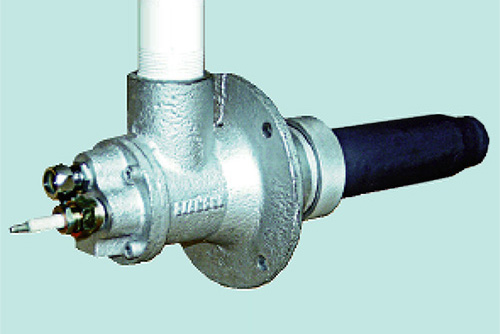Hydrogen burner
In recent years, hydrogen has attracted attention as a fossil fuel alternative that does not emit carbon dioxide (CO2); however, the emission of nitrogen oxides (NOx), which are harmful substances, tends to increase when it is used as burner fuel due to its high maximum flame temperature and high combustion rate, posing a challenge in terms of safety.
By adopting a burner structure that takes advantage of the properties of hydrogen fuel, this hydrogen burner developed in cooperation with Toyota Motor Corporation achieves excellent low NOx performance and a high level of safety, as well as zero carbon dioxide emissions.

H2-HSGB hydrogen burner
Features
Zero carbon dioxide emissions
No carbon dioxide is emitted, as there is no carbon in hydrogen.
Excellent low NOx performance
It achieves low NOx performance by using parallel flows of hydrogen and air in the burner for slow combustion, which reduces the flame temperature.
High level of safety
It has a burner structure in which the fuel mixes with air after it is discharged through the nozzle. It supplies air and fuel independently; therefore, it is possible to safely burn hydrogen without backfires during combustion.

Hydrogen combustion mechanism

NOx performance
Standard burner specifications

Applications
Heat source for industrial furnaces, heat source for air heaters, direct heating of aluminum and steel, and other applications.
Hydrogen is highly reactive and does not generate soot; therefore, it is possible to slow and reduce combustion under conditions that are not possible with other fuels. It is expected that hydrogen burner will be applied in unprecedented applications by taking advantage of these characteristics.








